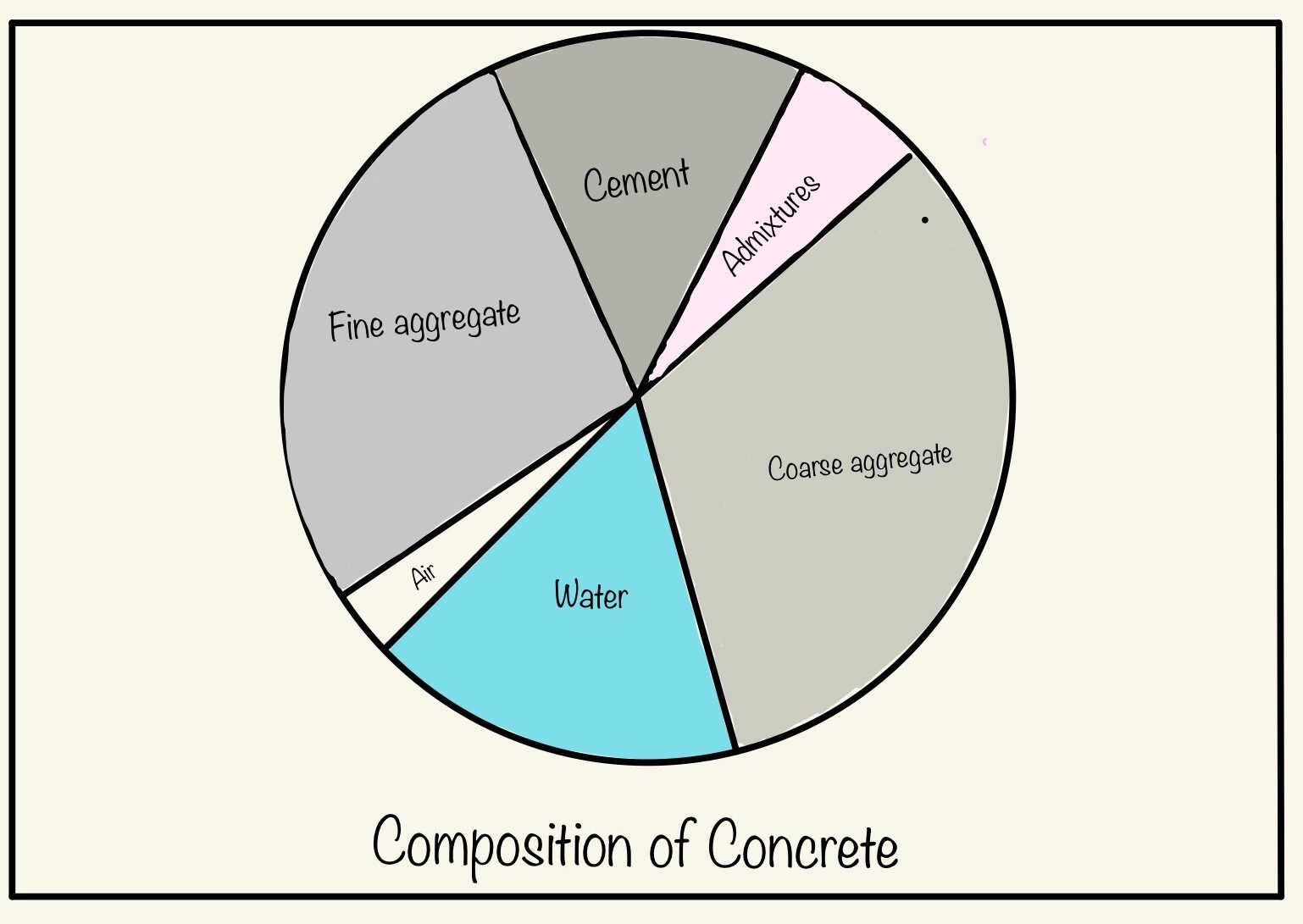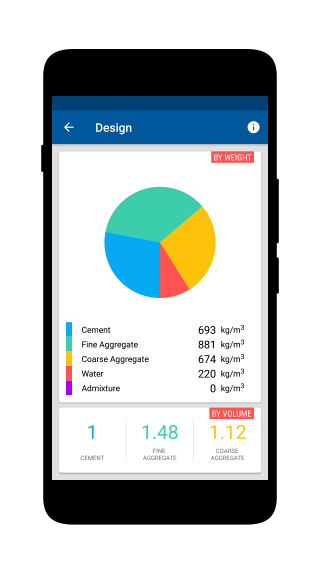Concrete
Concrete is the backbone of civil engineers. It is one of the most widely used construction material because of its own stand out efficiencies.

It is a man made material so it is very much possible for us to tweak different properties of concrete mix. By changing the proportion of different materials used, we can alter the properties and will allow us to get the desired quality. The use is not only restricted to only structural application but in the domain of transportation engineering to environmental engineering it is widely used as the construction material.
How its made?
In the most simplest form concrete is the mixture of coarse aggregate, fine aggregate, water and cement. The mixture of water and cement called as paste act as the binding agent between the coarse and fine aggregate. The cement paste fills the pores between the particles of aggregate and through the chemical reaction called as hydration, the cement paste hardens and helps in strength gain.
The different proportions of materials to be added as per the desired strength is efficiently calculated by following the design mix procedures as per Indian standard codes. To read in detail about the procedure of concrete mix design , you can go to this post “Concrete mix design procedure as per IS 10262:2009 & IS 456:2000“. I have also implemented the mix design procedure by considering few examples M10 M20 M25 M30 M40 M50.
When there is a demand of high strength or high workability or any other dominant properties we usually add the most suitable admixtures as per the demand.
Ohh wait !!!!
You want to know more about admixtures…
Check this post “Why admixtures used ?”
Benefits of concrete
- It is an economical material – a cheaper source of material.
- Good in compression.
- Non combustible
- With proper addition of admixtures we can easily change the properties of concrete – as per the demand.
- We can easily change the shape of the material, before the initial setting time.
Drawbacks of concrete
- It is bad in tension.
- It is a brittle material and thus ductility is very low.
- The weight of structure is very large.
- It demands for a proper formwork, which adds on to the total cost of the construction.
- Scrap value is negligible.
Concrete Mix Design
- Calculate cement, sand and aggregate quantity in concrete.
- Calculate the number of premix bags required for your project.
- Option to set your own size and rate of premix bags.
- Calculate the volume of concrete required for slabs, walls, footings and columns.
- Calculate the weight of ingredients required for preparing the calculated volume of concrete.
